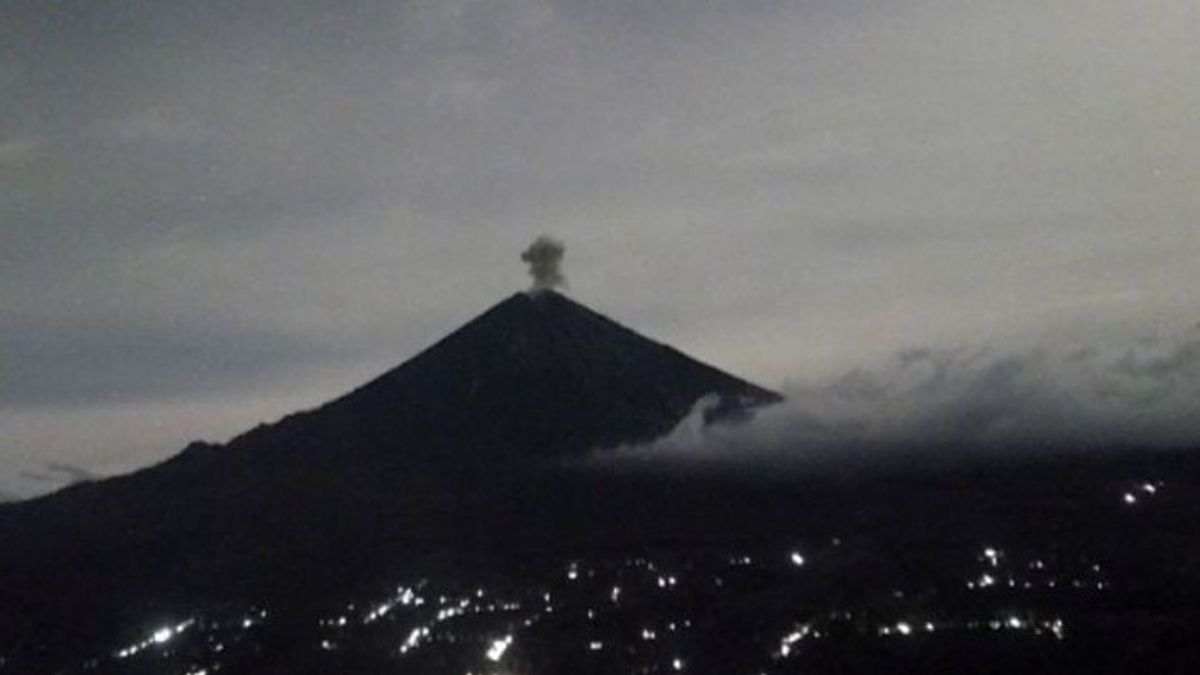LUMAJANG - Mount Semeru has experienced two eruptions throughout the day.
The first eruption at 15.48 WIB was recorded on the seismograph with a maximum amplitude of 22 mm and a duration of 128 seconds, but the height of the eruption column was not observed.
Officers of the Semeru Volcano Observation Post Ghufron Alwi on Mount Sawur, Lumajang Regency, in a written report stated that the second eruption occurred at 18.53 WIB.
"The height of the eruption column was observed to be about 800 meters above the peak (about 4,476 meters above sea level)," he said as quoted by ANTARA, Tuesday, January 23.
According to him, the ash column was observed to be gray with thick intensity to the northeast and east. The eruption was recorded on a seismograph with a maximum amplitude of 22 mm and a duration of 123 seconds.
Based on data from the Center for Volcanology and Geological Hazard Mitigation (PVMBG), throughout 2024 the mountain, which has a height of 3,676 meters above sea level (masl), was recorded to have experienced an eruption nine times.
The status of the highest mountain on the island of Java is still at Level III or Alert, so officers appealed to the public not to carry out any activities in the southeast sector along Besuk Kobokan, as far as 13 km from the summit (the center of the eruption).
Beyond that distance, people are not allowed to carry out activities at a distance of 500 meters from the riverbank (river border) along Besuk Kobokan because it has the potential to be hit by the expansion of hot clouds and lava flows up to a distance of 17 km from the summit.
SEE ALSO:
"Then residents are also not allowed to move within a 5 km radius of the crater/peak of Mount Semeru because it is prone to the danger of throwing stones (lightning)," he said.
The public is also asked to be aware of the potential for hot clouds, lava avalanches, and lahars along rivers/valleys that originate at the peak of the Semeru Volcano, especially along Besuk Kobokan, Besuk Bang, Besuk Kembar, and Besuk Sat as well as the potential for lahars in small rivers which are tributaries of Besuk Kobokan.
The English, Chinese, Japanese, Arabic, and French versions are automatically generated by the AI. So there may still be inaccuracies in translating, please always see Indonesian as our main language. (system supported by DigitalSiber.id)


















